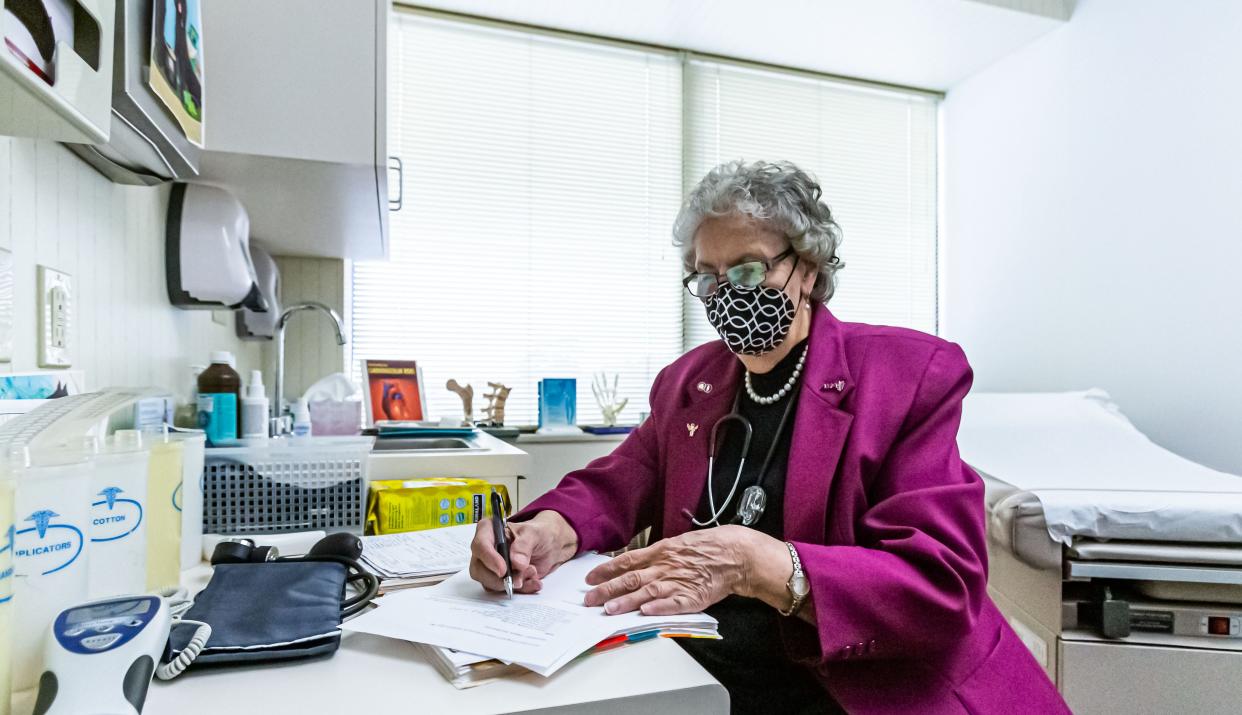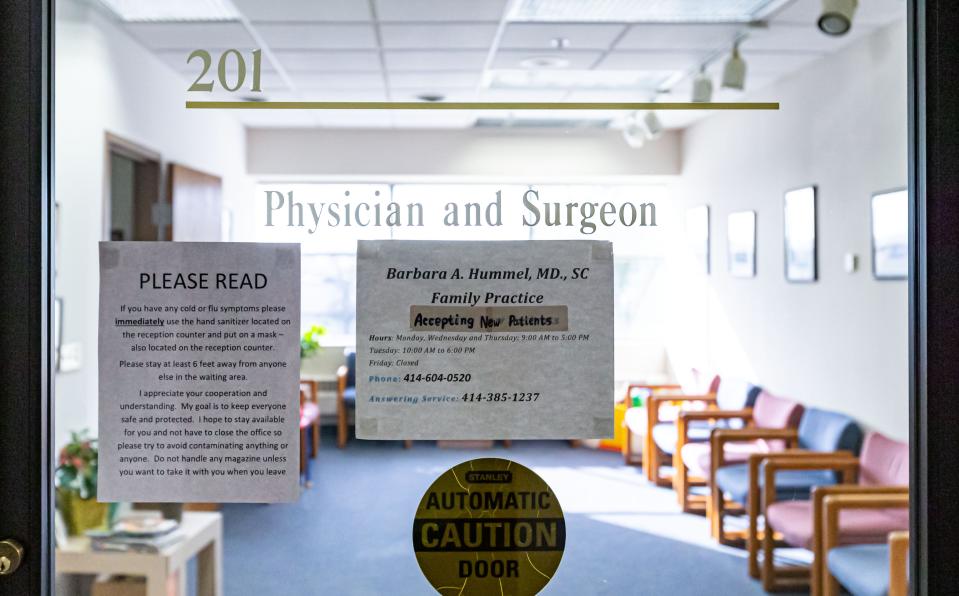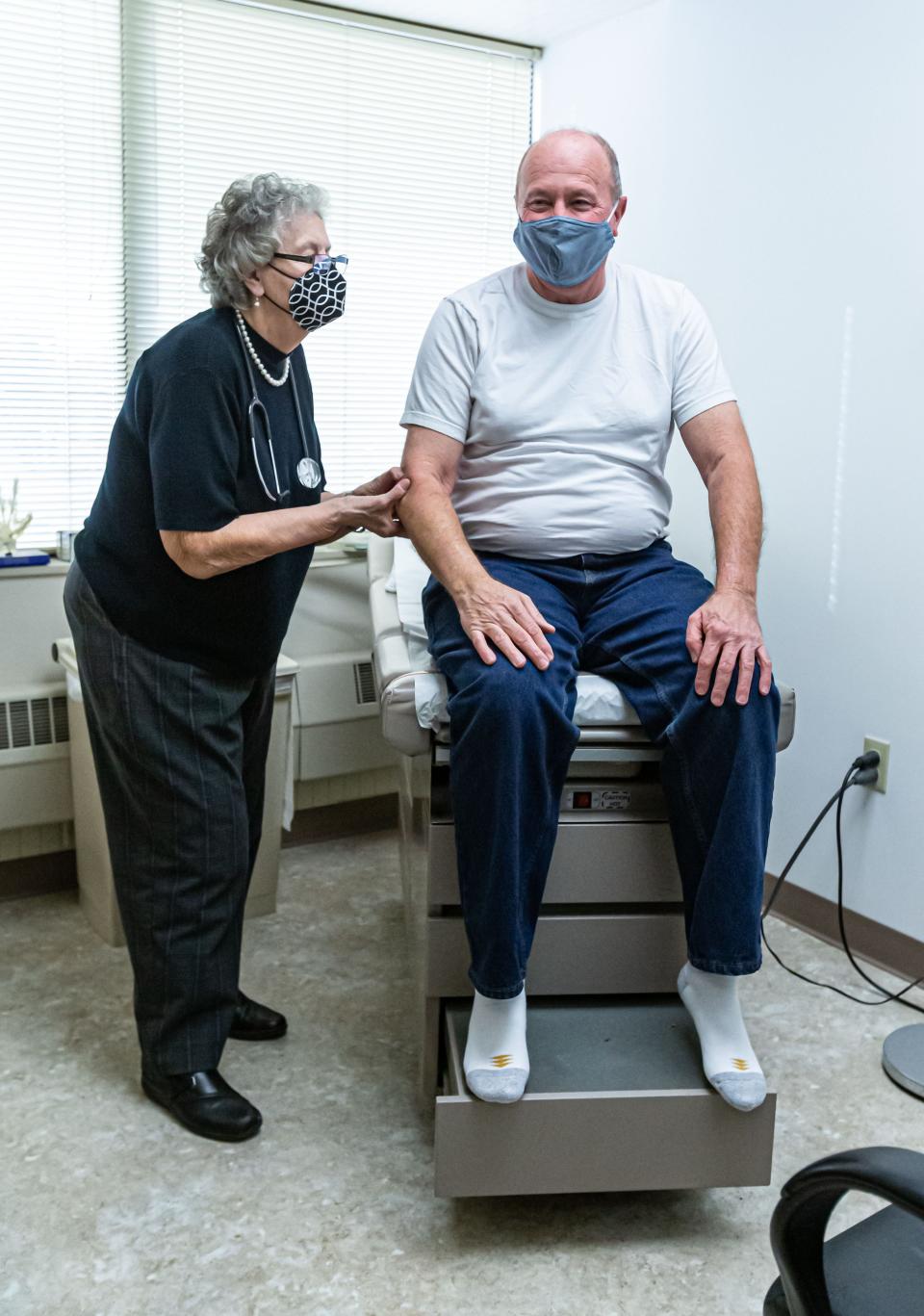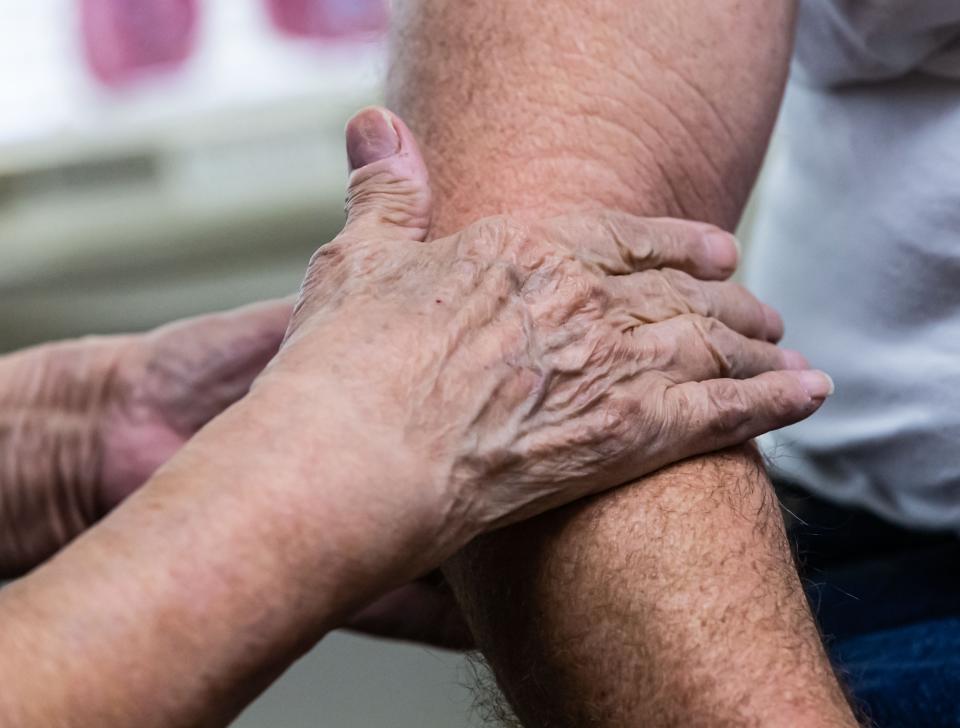We need doctors more than ever to fight COVID-19, but smaller practices can't afford to stay open

“Hello, Dr. Hummel’s office. Yes, of course. I understand.”
Dr. Barbara Hummel hung up the office phone with a sigh. Another patient canceling their appointment.
Hummel's been running her Milwaukee private practice since 1995. It was her dream job since she decided to go back to school for medicine when she was 36 years old.
At the height of her business, she would see about 16 patients a day. But since the coronavirus pandemic, she has been lucky to see nine patients come through the door. Some days, as few as two patients have shown up.
She is now the sole employee of her office, working as a doctor, receptionist and office manager.
“This last year has been rough,” the 77-year-old family doctor said. “My practice is technically bankrupt, so I’m paying all my expenses out of my personal funds … using retirement savings.”

Hummel is not alone. Smaller physician practices like hers are struggling to stay open during the public health crisis as the pandemic strains the American health care system. A survey issued by the American Medical Association late last month found the average revenue in medical practices has dropped by 32%.
Revenue reductions were 50% or greater for nearly 1 out of 5 physicians, according to the nationally representative survey of 3,500 physicians, administered from mid-July through August.
“Physician practices continue to be under significant financial stress due to reductions in patient volume and revenue, in addition to higher expenses for supplies that are scarce for some physicians,” said AMA President Dr. Susan R. Bailey.
One-third of surveyed physicians said in-person visits decreased by 50% or more during the pandemic.
Hummel says her revenue is down nearly 60% because the majority of her patients are older and afraid to leave their homes. They know the coronavirus disproportionately affects people over 70.

Wisconsin reported more than 38,000 new cases in the week ending Sunday – another record for the state. Nearly 13,000 COVID-19 patients are hospitalized, and more than 1,500 of them are in intensive care units.
Hummel knows that at her age she, too, is at higher risk for severe disease, but that doesn't stop her from going to the office every day and visiting patients. Recently, she made a house call to one of her 100-year-olds to give her a flu shot in the backyard.
"I’m concerned. I take all the precautions I can. I know that if I get COVID I’m probably at risk of being one of the fatalities, but if I dwell on that I wouldn’t leave my house and I can't do that," she said. "I have an obligation to be here and to help provide care for my patients and I understand that obligation."
Hospitals overwhelmed: Exhausted staffs, surging COVID-19 cases push nation's limits
Many offices have turned to telemedicine. But despite an increase in virtual visits since February, the AMA survey found nearly 7 out of 10 physicians said they were still providing fewer overall visits.
Hummel has tried to help her patients adapt to telemedicine. Most of them don't have mobile phones, let alone a computer.
"Telemedicine doesn’t pay for the office overhead, not at all," she said. "And, again, most of my patients don’t even have access to it."
As smaller practices struggle to break even, they’re faced with additional costs. Nearly half of medical practice owners surveyed by the AMA said spending on personal protective equipment has increased 50% or more since February.

Thirty-six percent of physicians said acquiring more PPE was very or extremely difficult for smaller practices that lack purchasing power to compete with larger health systems.
Before the pandemic, Hummel spent about $12 on a pack of 50 surgical masks. In the spring, that same pack of masks cost $50. When demand from bigger hospital systems overwhelmed her distributors, she resorted to buying masks from Amazon, which cost $15 to $30 a pack.
Since Hummel began offering coronavirus testing in the spring, she has had to buy more gowns, gloves, face shields and N95 masks. Testing doesn't bring any revenue to the office; in fact, it depletes PPE and other resources. But she believes it's a service the community needs.
"I had to scrounge," Hummel said. "I had a patient actually bring me my first N95 mask because I couldn’t find it, and he was a woodworker and he had four or five of them in his shop."
Concerned for her older patients, Hummel also invested in UV-C light equipment to disinfect exam rooms during her lunch break and at the end of the day.
She also spends more on hand sanitizer and Clorox wipes. She keeps a bottle of hand sanitizer in every corner of the office and schedules 15 minutes between patients to disinfect everything in the exam room.

The AMA argues its survey shows more economic relief is needed from Congress "as some medical practices contemplate the brink of viability, particularly smaller practices that are facing a difficult road to recovery."
Family practices had been struggling since before the pandemic. According to the AMA’s Physician Practice Benchmark Surveys in 2018, 54% of physicians were working in private practices, compared with 60.1% in 2012.
But Hummel isn't giving up. She has worked in big hospitals and has no interest in returning to that type of medicine. If things don't pick up in the next year, she's considering leasing her space to another doctor and splitting expenses, or joining an independent physicians group.
"A lot of these patients have been with me for 15 to 20 years, and that’s hard for them. Change is hard for some of my older patients," she said. "So, I’ll stick around for as long as I can."
Follow Adrianna Rodriguez on Twitter: @AdriannaUSAT.
Health and patient safety coverage at USA TODAY is made possible in part by a grant from the Masimo Foundation for Ethics, Innovation and Competition in Healthcare. The Masimo Foundation does not provide editorial input.
This article originally appeared on USA TODAY: Small medical practices struggle during COVID pandemic, AMA survey sys

